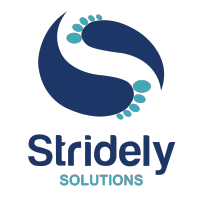As enterprises grow and modernize in the digital landscape, they need an agile ERP solution to thrive in the industry. SAP S/4HANA software is designed to assist business transformation enabling intelligent growth through automation and simplified data model. SAP S/4HANA offers three migration approaches Greenfield, Brownfield, and Hybrid. Businesses can choose any of the implementation approaches per their business objective. The right choice depends upon the enterprise’s unique need but how do you evaluate the best fit? That is what we are here for.
In this blog, we will delve into these three S/4HANA migration approaches, exploring their advantages and disadvantages so that you can decide the best for your business. But we get there, let us look at why SAP S/4HANA software stands out from other SAP applications.
Why Modern Business Need to Upgrade to SAP S/4HANA Software
SAP S/4HANA software provides significant advantages over traditional SAP tools, especially over SAP ECC:
- Faster Processing: The in-memory database offers user real-time data access enabling faster transactions.
- Simplified Data Model: SAP S/4HANA software minimizes data redundancy and software complexity.
- Advanced Analytics and Forecasting: The built-in forecasting tools in S/4HANA can identify trends and potential challenges.
- Enhanced User Experience: The Fiori interface of SAP S/4HANA software provides an enhanced user experience comprising intuitive navigation and a dashboard.
- Future proof solution: Since SAP is ending its ECC support by 2027, migrating to SAP S/4HANA software is a reliable choice to get future ERP support.
Greenfield Implementation
The Greenfield approach represents a complete reengineering of the system. It involves building a new SAP S/4HANA software from the beginning without utilizing or customizing the existing structure. The new architecture offers a permanent modernization solution through rapid updates, eliminating the need for any new installation. Both new and existing users can leverage the greenfield approach preferably if the system is complex.
Advantages:
- Provides SAP’s latest practices and innovations
- Enables reengineered system aligning to SAP standards.
- Reduce complexity and simplify business processes.
- Offers rapid and continuous updates
- Supports modern architecture with cloud integration solutions.
Disadvantages:
- High Cost and Effort: Revamping and redesigning a new system demands a lot of time, resources, and expertise.
- Risk of Disruption: During the migration phase businesses may experience disruption of operations.
Best For:
Greenfield’s approach is best suited for businesses seeking modernization solutions, who want to standardize their operation and enable advanced processes.
Brownfield Implementation
Brownfield’s approach represents updating an existing SAP system while maintaining its current configuration. Some businesses prefer to update only what is necessary instead of revamping the entire architecture and that is what a brownfield implementation offers. The backend upgrade also enables additional functionality if needed.
Advantages:
- Lower Disruption: Minimizes impact on ongoing business processes by preserving existing workflows and customizations.
- Cost Efficiency: Faster implementation with reduced costs compared to Greenfield.
- Leverages Investments: Retains prior investments in configurations and interfaces.
Disadvantages:
- Limited Innovation: While retaining legacy customizations, adopting new features and processes may get impended.
- Complexity in Migration: To ensure new implementations are compatible with SAP S/4HANA software careful analysis must be done.
Best For:
Companies seeking a faster transition with minimal disruption while maintaining their current system landscape.
Bluefield- Hybrid Implementation
This approach combines the best of both the Greenfield and Brownfield approaches. This approach involves reengineering selective areas while retaining others. The Bluefield approach offers users faster implementation and improved performance. Moreover, it enables seamless SAP S/4HANA software platform implementation while minimizing data loss and business disruption.
Advantages:
- Flexibility: Provides the option to update important areas while keeping reliable legacy procedures in place when necessary.
- Cost Optimization: Strikes the balance between modernization costs and existing investments.
- Scalability: Allows gradual adoption of cloud-based functionalities alongside on-premises systems.
Disadvantages:
- Integration Challenges: Data flow between on-premises and cloud components may turn out complex.
- Customization Limitations: Integrating legacy customization with new modules may take additional effort and resources.
Best For:
Businesses are looking for diverse needs across regions or departments, aiming for incremental modernization without full disruption.
Key Considerations for Choosing the Right SAP S/4HANA Migration Approach
Enterprises can choose the SAP S/4HANAsoftware implementation approach based on several evaluations like their long-term objective, complexity of their existing system, data strategy, cost, resources, and more. Below is a more detailed breakdown of the factors to consider while implementing S/4HANA:
- Business Objectives
- Greenfield: Ideal for businesses looking for significant transformation and modernization of processes.
- Brownfield: Suitable for businesses that want to keep their existing processes while upgrading to SAP S/4HANA software.
- Bluefield: Best for companies looking to selectively innovate while retaining valuable legacy elements.
- Current System Complexity
- Greenfield: Requires a thorough understanding of existing systems, as it involves starting anew.
- Brownfield: Focuses on existing configurations, making it less complex in terms of data migration.
- Bluefield: Balances complexity by allowing selective migration of processes and data.
- Cost and Resource Availability
- Greenfield: It may require higher time and resource investment in terms of time due to complete new implementations.
- Brownfield: It is comparatively more cost-efficient as it is built on existing infrastructure, minimizing the need for extensive retraining.
- Bluefield: Offers a middle ground, allowing organizations to control costs by selectively migrating components.
- Change Management Readiness
- Greenfield: May face resistance due to significant changes; requires strong change management strategies.
- Brownfield: Less disruptive as it retains familiar processes, making it easier for users to adapt.
- Bluefield: Requires careful planning to manage changes effectively while introducing new functionalities.
- Timeline for Implementation
- Greenfield: Longer timelines due to the comprehensive nature of building a new system.
- Brownfield: Faster implementation as it upgrades existing systems without a full redesign.
- Bluefield: Offers flexibility in the timeline by allowing phased migrations based on priority.
- Future Scalability and Flexibility
- Greenfield: Designed with future scalability in mind, leveraging modern architectures.
- Brownfield: May face limitations if legacy systems are heavily customized; future changes could be challenging.
- Bluefield: Provides flexibility to adapt and scale by allowing integration of new functionalities while retaining core elements.
- Stakeholder Involvement
- Greenfield: Requires extensive input from all the decision-makers to define new processes and objectives.
- Brownfield: Offers the convenience of easy buy-in to stakeholders as familiar processes are retained.
- Bluefield: Encourages stakeholder engagement by allowing them to choose which processes to retain or change.
Enabling the Right SAP S/4HANA Migration Approach for Your Business
As discussed in this blog, all three SAP S/4HANA software approaches have their unique advantages. Implementing the right approach for your business requires evaluating your business objectives, resources, and risk tolerance. The Greenfield approach is best suited for enterprises looking to build a new system eliminating redundancy in their existing system. The second approach the Brownfield, provides a practical solution for businesses that want to leverage their existing assets while minimizing risk and optimizing costs. The third Bluefield or hybrid approach, provides businesses the convenience to modernize specific parts of their SAP system while maintaining existing configurations, enabling a balanced approach to innovation.
At Stridely Solutions, we leverage our extensive SAP expertise to help businesses implement Greenfield, Brownfield, and Bluefield approaches while addressing challenges and complexities. We support businesses at all levels of SAP S/4HANA software implementation whether launching a new project or enhancing an existing system. Our digital transformation expertise will help you scale your business efficiently.


